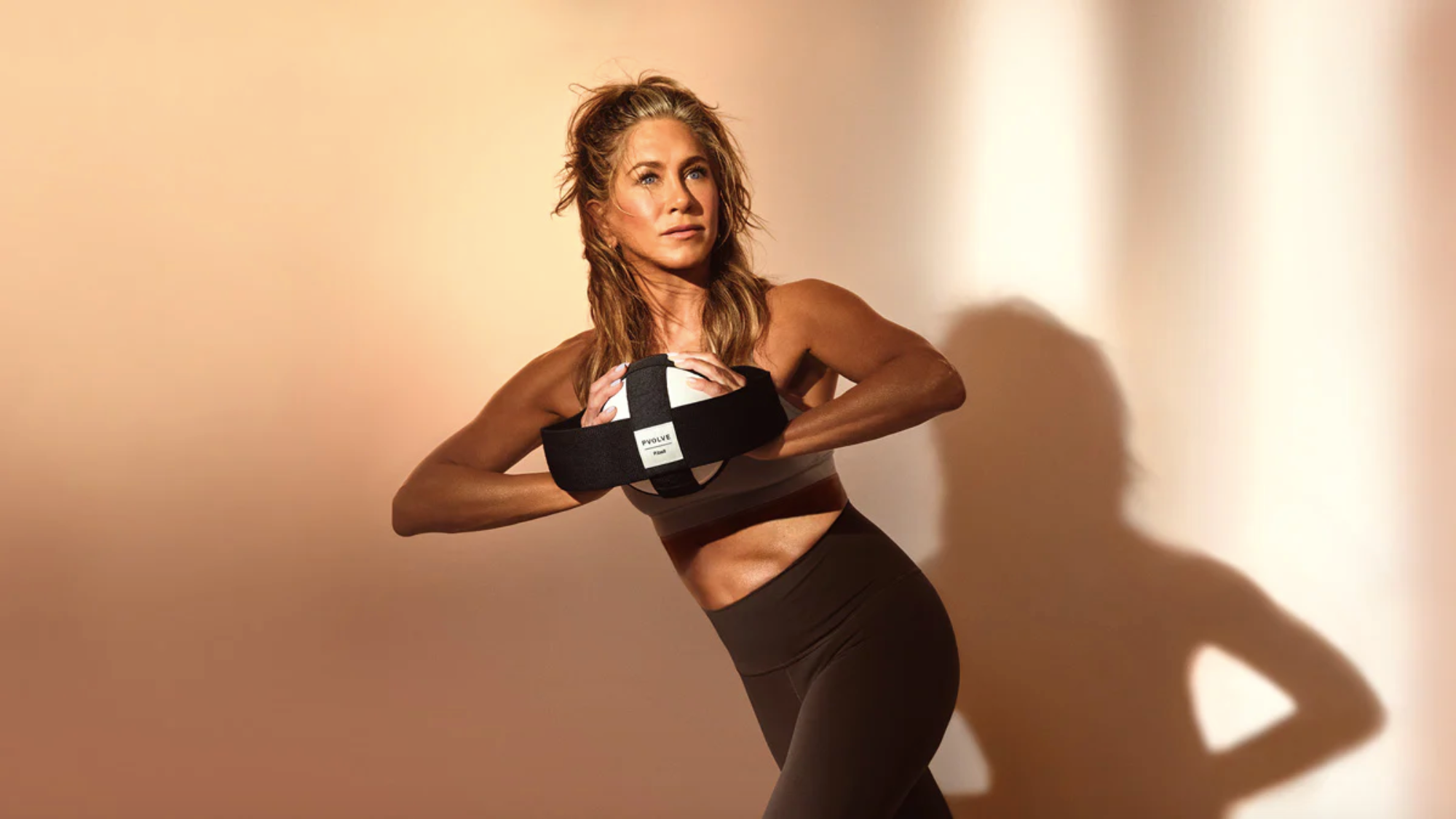Jennifer Aniston has added balance training to her workout routine - here's why you should, too
We'll happily take Jen An's lead on this one.


If you regularly check home workouts and cardio workouts off your to-do list, you likely have a well-rounded routine - but have you ever thought about balance training?
Balance is an often neglected element of our fitness, but fans of the training style include Jennifer Aniston, who recently told Well+Good: “Balance is one thing we need, especially when we’re older. Our core is extremely important our bones get brittle, so we have to keep our bone health strong."
She's been talking about her balance as an ambassador for low-impact training platform p.volve, a style of exercise she says "addresses all of those little micro muscles that are ignored most of the time when you’re doing runs or going to spin classes or doing CrossFit. These are all great methods, but over time, the body and the joints can only take so much. [It's important to keep] our bodies moving."
But let's back up a second: why is balance so key to good health? "Balance is the neuromuscular skill that maintains the body’s centre of gravity over its base of support," explains personal trainer, pilates and pole instructor Tatianna Donbavan. In short: being able to maintain stability while your weight - or the floor - is shifting.
If you're someone who regularly wobbles in yoga, you'll know how frustrating a lack of balance can be. But even if you're able to jump and down on one leg with your eyes closed and not fall over, there are still benefits to improving your balance. A 2022 review from the Journal of Physiotherapy found that exercise programmes that included balance training were shown to reduce ankle injuries by 37% in footballers. Don't miss our guides to how to workout at home and the best home arm workouts and stretching workouts, while you're here.
Balance training is Jen An's favourite workout: your guide
What are the benefits of improving your balance?
There are a whole host of benefits to improving your balance. Losing your balance is associated with older age and it's true that our balance declines as we get older: one study found a 30% reduction in performance in balance tests between people in their 20s versus those in their 70s.
If you think that's a problem for 70-year-old you to deal with, think again. "Balance training is important for everyone," explains Donbavan. "If you regularly exercise, you need good balance to move quickly and change directions, and it is definitely easier to train balance as a young person than to wait until you’ve started to lose your balance before improving it."
Celebrity news, beauty, fashion advice, and fascinating features, delivered straight to your inbox!
That means you have to start now - and don't stop. "If you don’t use it, you lose it," adds Donbavan. Indeed, an International Journal of Exercise Science paper reported that "former athleticism did not significantly enhance static balance in later life", meaning balance training is something you have to do forever.
Still not convinced? Did you know how well you can balance on one leg could actually be a predictor of how long you'll live? A famous 1999 study tested men and women in their 50s in three elements of fitness: grip strength, sitting and standing tests and balancing on one leg with their eyes closed.
Those who did well in these tests were less likely to have cancer or a heart attack when researchers followed up thirteen years later - but the ability to stand on one leg had the biggest association with longevity and good health. Want to test it now? If you can hold for ten seconds, you're likely to be doing well, according to the BBC.
A post shared by Jennifer Aniston (@jenniferaniston)
A photo posted by on
5 simple tips for improving your balance
1. Add instability
"Balance training can be really fun, and the best way to start is by adding instability to your sessions," says Donbavan. That means exercising - or simply standing - on uneven surfaces, such as one leg or a wobble board.
2. Try the TRX
"When I’m working with someone that isn’t great at balancing, I start with a TRX. It is a very versatile piece of equipment, and a great way to get people to do single leg work or work through multiple planes of motion with some support," Donbavan adds.
3. Focus on... your focus
Focus is also a key element of balance training. It's why, if you've ever stood on one leg, the advice is to look at something still in the distance. Keeping your head up and eyesight focused can help you stabilise your body.
4. And your breathwork, too
Your breathwork is also important for full body control, so go for slow and controlled inhales and exhales.
5. Boost your strength
Of course, better balance comes from improved all-round strength, which is why Jen An loves using resistance in her training. A strong core is responsible for stabilising all of your joints and bones, so work on your overall strength and squeeze when balancing.
4 best exercises for balance
Keen to boost your balance? The trainer recommends giving the following a go.
1. TRX lunges
What? A TRX lunge mimics the motions you make when walking and running, so it's a great way to improve your balance for every day life.
How? Start with a lunge in which your hold the TRX in your hands in front of you and step backwards. Then, graduate your balance training to foot-supported TRX lunges, where your foot is placed in the TRX handle and hovered backwards.
2. TRX rows
What? A TRX row will challenge your ability to balance in midair while strengthening the upper body.
How? Row with both hands on the TRX to begin and, when you're stable, try single arm TRX row for extra balance challenge.
3. TRX plank
What? This TRX move is all about testing your balance and strengthening your core - the perfect double dose.
How? Hooking your feet into the TRX handles and holding is one thing - but moving through a pike and tuck position challenges your control even more.
4. Standing on one leg
What? Yep, that's it. Practising standing on one leg is a good way to work up to that important 10 seconds of balance that is associated with a longer life.
How? You can do this whenever you like, but many people report standing on one foot while they brush their teeth as a way to habit stack their balance training. Alternatively, do it while you're waiting for the kettle to boil or break up your desk time by balancing.
How long does it take to improve your balance?
This will depend on your current fitness levels and how much time you have each week to dedicate to your balance training.
The NHS website advises aiming for around five sessions a week, of 30 minutes at a time. That's a good base level of working out, and promises to either maintain or improve your fitness.

Chloe Gray is a freelance journalist who writes and talks about health, fitness, and wellbeing through a feminist lens. She was part of the launch team for Stylist magazine's fitness brand, Strong Women, and has written for i news, Women's Health, Red magazine, Good Housekeeping, Refinery29, and more. She's all about building mental and physical strength, eating delicious food that fuels you well, and making the fitness industry more accessible and enjoyable. She's also a qualified fitness trainer and research nerd, so you can be sure everything you read is backed by proper science.